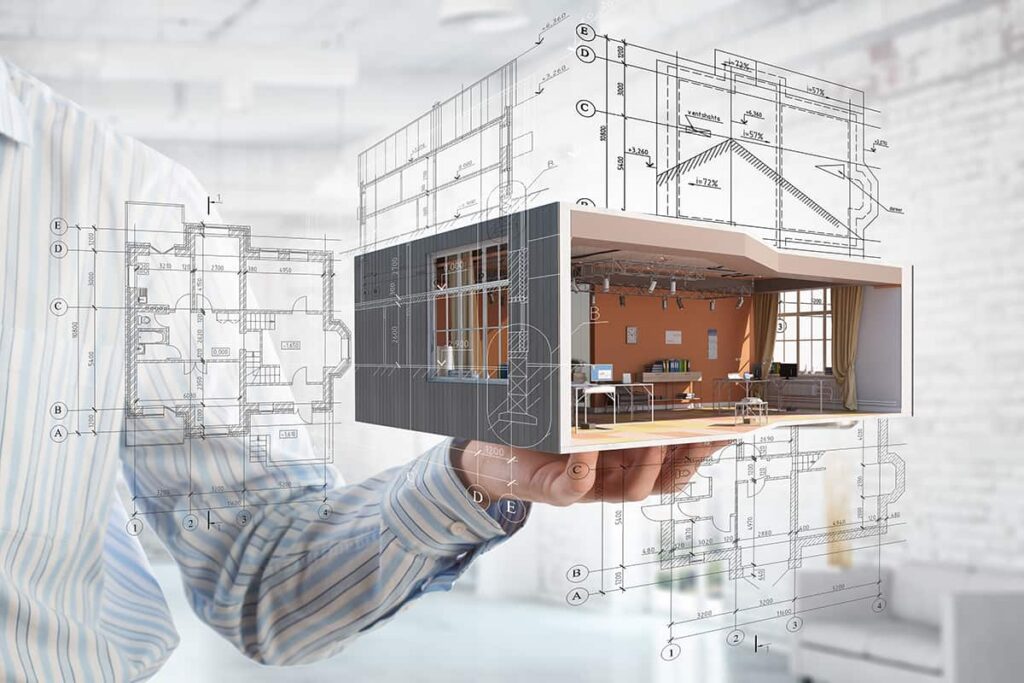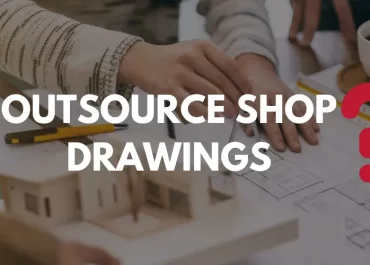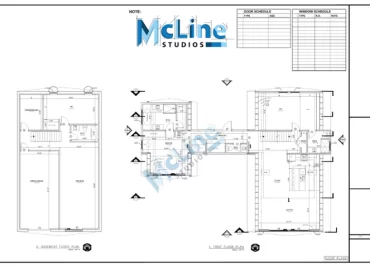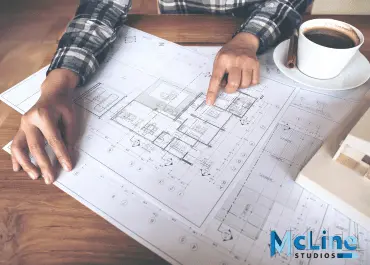As the field of architecture continues to evolve, new technologies and design concepts are emerging, shaping the way we approach architectural drawings and design.
In this blog, we will explore some of the future trends in architectural drawings and design, including advancements in technology such as MEP BIM drafting, interior drafting, and BIM outsourcing services.
We will also delve into the growing importance of sustainability and the integration of nature into building design. Additionally, we will discuss the role of Artificial Intelligence and Machine Learning in architectural design, as well as the increasing popularity of Virtual Reality and Augmented Reality technologies.
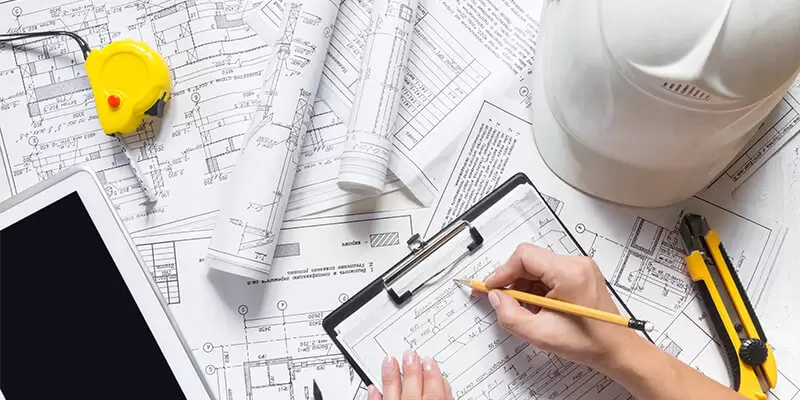
Advances in Technology in Architectural Drawings
As technology continues to advance, it will have a significant impact on the way we approach architectural drawings and design. One of the most significant advances is the increased use of artificial intelligence (AI) and machine learning in the design process.
These technologies will allow architects to create more complex and efficient building designs, taking into account factors such as energy consumption, natural light, and airflow. Another technological advancement that will impact architectural design is the increased use of virtual and augmented reality.
These technologies will allow architects to create more immersive and interactive designs, providing clients with a more realistic representation of their building before construction even begins. This will help to reduce errors and ensure that the final design meets the client’s needs and expectations.
In addition to AI and VR, the use of 3D printing in construction is also likely to increase in the future. 3D printing will allow architects to create complex and unique designs that would not be possible with traditional construction methods.
This technology will also help to reduce waste and increase efficiency in the construction process. The integration of MEP BIM drafting, interior drafting, and BIM outsourcing services with these advanced technologies will further improve the design process and provide better outcomes.
Sustainability in Architectural Design
Sustainability is a crucial future trend that will significantly impact architectural design, including MEP BIM drafting, interior drafting, and BIM outsourcing services.
With the increasing awareness of human activities’ impact on the environment, architects must focus on creating buildings that are energy-efficient, environmentally friendly, and sustainable. This will require using renewable and recyclable materials and designing buildings that minimize energy consumption and greenhouse gas emissions.
Green roofs and living walls are effective ways to achieve sustainability in architecture. Green roofs, which are essentially gardens on the roof of a building, can help reduce energy consumption and absorb rainwater. Living walls, covered in vegetation, can improve air quality and reduce the urban heat island effect.
Passive design principles are also an effective approach to sustainable architecture. Passive design involves designing buildings that utilize natural light sources, heat, and ventilation to minimize energy consumption.
This may involve incorporating large windows to allow natural light in or utilizing shading devices to reduce heat gain in the summer. As architects embrace sustainability, the focus on eco-friendly design will only grow.
Integration of Nature in Architectural Design
The integration of nature into architectural design is a prominent future trend that is gaining traction in the field of architectural services. As we continue to distance ourselves from the natural world, architects will need to find ways to incorporate natural elements into their designs.
One way to achieve this is by using natural materials such as wood and stone or designing buildings that blend harmoniously with the surrounding environment. Biophilic design is an innovative approach that architects can use to incorporate nature into their designs.
By drawing inspiration from nature, architects can create buildings that utilize natural elements such as light, vegetation, and water features to create spaces that promote a sense of well-being and restoration.
Another approach to integrating nature into architectural design is through green infrastructure, which involves creating green spaces such as parks and gardens throughout urban areas. This approach can help to reduce the urban heat island effect, improve air quality, and provide habitats for wildlife, among other benefits.
Virtual Reality and Augmented Reality
Virtual Reality (VR) and Augmented Reality (AR) are revolutionizing the architectural industry by offering immersive experiences that help architects and designers create realistic 3D models of buildings.
VR is a computer-generated environment that simulates a three-dimensional space that can be experienced using specialized headsets. On the other hand, AR overlays digital images in the real world, enabling architects to visualize the designs in the actual space.
These technologies are being used by architects and designers to create virtual models of buildings, allowing them to explore and modify the design from every angle.
The benefits of VR and AR in architectural design are manifold. Firstly, they provide a realistic walkthrough of the proposed design, giving clients and stakeholders a better understanding of the project.
This can help to reduce misunderstandings and ensure that all parties are on the same page. Secondly, VR and AR can be used to test the functionality of a design before construction begins.
For instance, architects can use VR to simulate how people will move through the building and make adjustments to the design to improve circulation and flow. Lastly, VR and AR can help clients make informed decisions about the project by allowing them to visualize the final project before construction begins.
Artificial Intelligence and Machine Learning
Artificial Intelligence (AI) and Machine Learning (ML) are two other technologies that are having a big impact on architectural design. AI refers to computer systems that can perform tasks that typically require human intelligence, such as visual perception, speech recognition, and decision-making.
ML is a subset of AI that focuses on teaching machines to learn from data, without being explicitly programmed.
AI and ML are being used in architectural design in several ways. First, they can be used to analyze data about a site or building to identify patterns and trends that may impact the design.
For example, an AI system could analyze data about the movement of people through a building to identify areas of congestion and recommend design changes to alleviate the problem.
Second, AI and ML can be used to generate design options based on a set of parameters. For example, an AI system could generate a range of building designs based on factors such as site conditions, building function, and client preferences.
Finally, AI and ML can be used to automate certain tasks in the design process, such as generating floor plans or selecting building materials. This can help to save time and reduce errors in the design process.
AI and ML technologies can be used in various architectural services, including MEP BIM drafting, Interior drafting, and BIM outsourcing services.
Building Information Modeling (BIM)
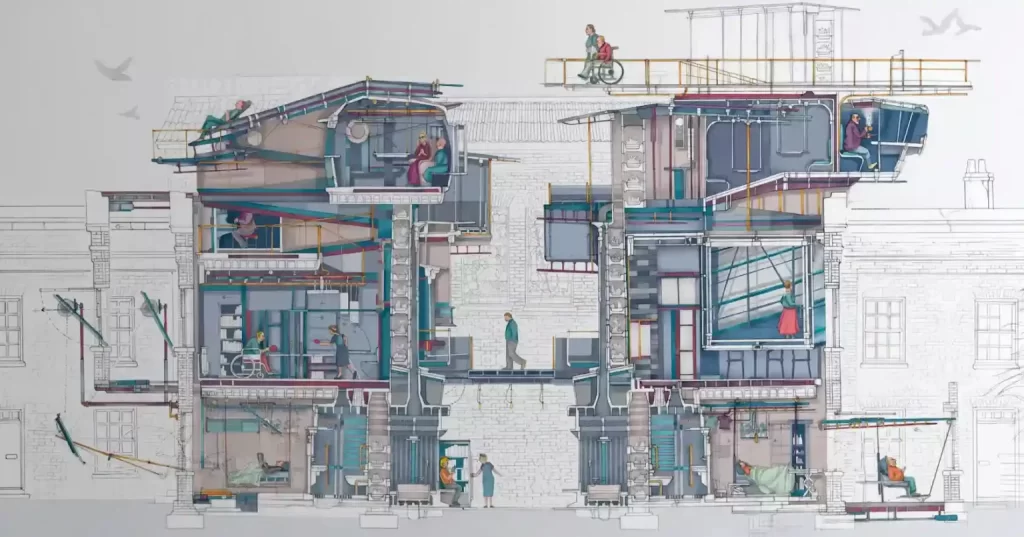
Building Information Modeling (BIM) is a technology that has been around for some time but is becoming increasingly important in the architectural industry. BIM is a digital representation of a building that includes information about the building’s geometry, materials, systems, and performance.
Architects, engineers, and contractors use BIM to collaborate on the design and construction of a building.
BIM outsourcing services are becoming increasingly popular due to the benefits that BIM offers in the construction and operation of buildings, from MEP BIM drafting to interior drafting and architectural services.
BIM is becoming increasingly important in the industry because it allows all stakeholders to work from the same model, reducing errors and improving communication.
BIM also allows architects to simulate the performance of a building, including energy use, heating and cooling, and lighting. This can help architects design more energy-efficient buildings that are better for the environment and more cost-effective for clients.
BIM is also being used to improve the maintenance and operation of buildings. By including information about the building’s systems and equipment in the BIM model, building owners, and operators can better understand how the building works and make more informed decisions about maintenance and upgrades.
The Final Note
The future of architectural design looks promising, with the advent of new technologies and tools making it easier than ever to create innovative and sustainable buildings.
With the integration of technologies such as MEP BIM drafting, Interior drafting, and BIM outsourcing services, architects and designers have access to a range of advanced tools that are transforming the way they work.
The use of virtual reality and augmented reality allows architects to create immersive and realistic models of buildings, while artificial intelligence and machine learning enable them to analyze and process data for better decision-making.
As these technologies continue to evolve and improve, we can expect to see even more exciting and groundbreaking developments in the field of architectural design in the years to come.

